Oyster Barbecue Hut in Itoshima
Itoshima oyster growing up in the rich nature of mountain and sea Itoshima oyster features
mellow and sweet taste. There are many Oyster Barbecue Huts at five fishing harbours.
The huts only open during the season, from end of October to March or April.
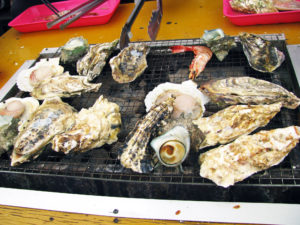 |
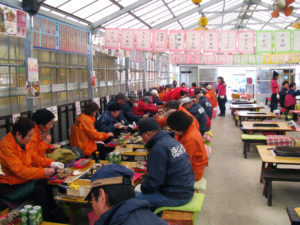 |
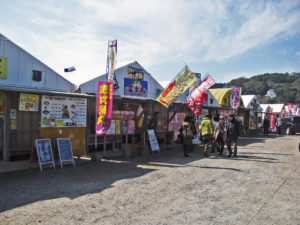 |
The huts are simple in construction; just big vinyl tents filled with a few dozen tables, each with
their own grill. You can get oysters, sazae (sea snails), prawns, fish and other seafood, fresh as
fresh can be, by the crate. The hut provides the grill, tongs, cotton gloves, and other tools for you
try your hand at grilling your own seafood.
Cooking them right can be tricky, but learning is part of the fun. For oysters, try putting the flat side
down first, flip after awhile, and wait for them to open from the heat. Take them off the grill—gloves
on of course—and open them the rest of the way with the provided knife. Add a touch of shoyu
(soy sauce), ponzu (a tangy citrus-based sauce), lemon juice, or mayonnaise if you like and they’re
ready to eat. If you’re unsure how to cook things, just look around at what the other tables are doing
or wave over the helpful kakigoya staff.
Yakiniku, 焼肉
Yakiniku is grilled meat and a popular cuisine in Japan.
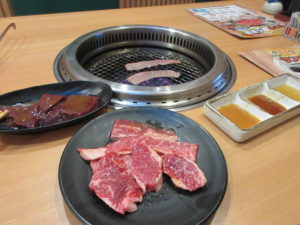 |
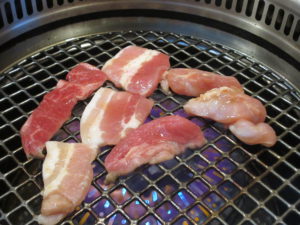 |
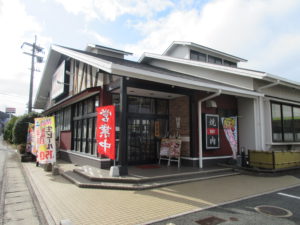 |
Grill beef, pork, seafood, and vegetables over an open flame in front of
you and eat them with sauce.
Soba and tempura, そば & 天ぷら
Soba and tempura are two of Japan’s most popular dishes, along with sushi.
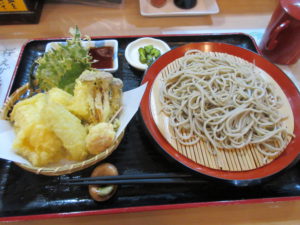 |
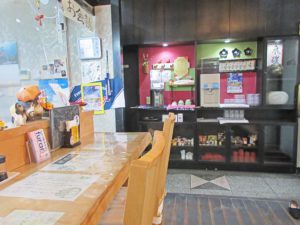 |
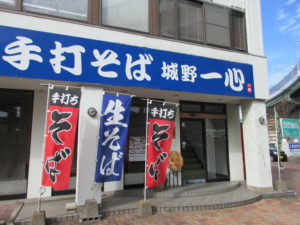 |
Soba (right cuisine of the photo) is a noodle dish made from buckwheat flour made
from buckwheat seeds.
Tempura (left cuisine of the photo) is a dish of seafoods and vegetables coated
with flour and fried in oil.
Chanpon, ちゃんぽん
Chanpon is a Japanese cuisine created in Nagasaki.
It was invented to provide a cheap and nutritious meal by the Chinese chef at Shikairo
restaurant in 1899 originally for Chinese students visiting Japan at that time, which is
a noodle dish made with chicken bone and pork bone soup and plenty of seafood and
vegetables from Nagasaki.
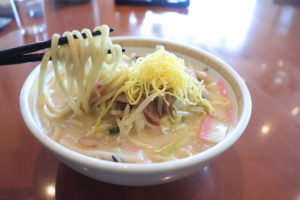 |
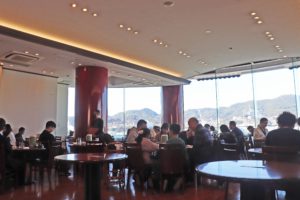 |
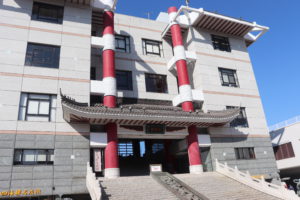 |
Now, it is one of the popular Japanes cuisine which you can eat any place in Japan.
Sushi, 寿司
Sushi is a popular Japanese dish consisting mainly of seafood on top of vinegared rice.
Sushi has a wide variety of toppings, and you can enjoy sushi according to the season.
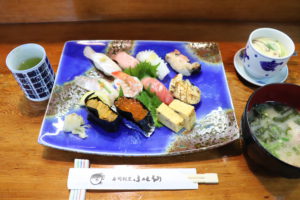 |
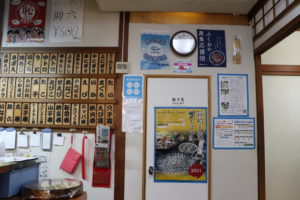 |
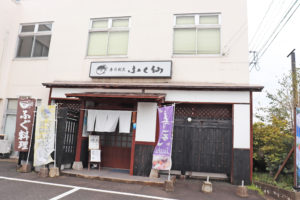 |
The freshness of the ingredients is especially important for sushi.
The sushi restaurant is generally counter-style, with the sushi toppings displayed in a
refrigerated showcase on the counter, and the sushi chefs making the sushi according
to customer orders.
Rokubei, 六兵衛
Rokubei is a local cuisine in Shimabara.
In 1792, Shimabara Disaster was occurred that Mt. Mayuyama exploded and caused
major damage due to landslides entire area of Shimabara.
After that, the Shimabara Peninsula experienced a food crisis, and sweet potatoes
became the staple food.
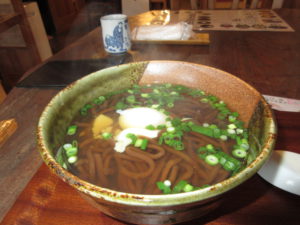 |
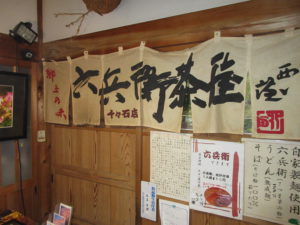 |
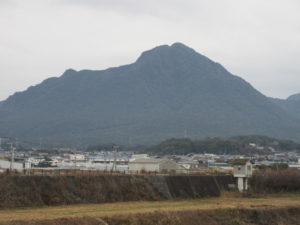 |
Rokubei is a noodle dish using sweet potatoes invented by farmer Rokubei.
The sweet potatoes were powdered, yams were added, and kneaded in boiling
water to make udon-like noodles.
Guzoni, 具雑煮
Guzoni is a local cuisine in Shimabara.
It is said to create during the Shimabara Rebellion of 1637.
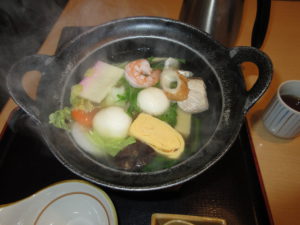 |
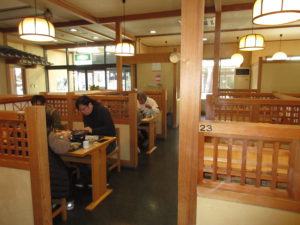 |
When Christians were fought under the leader ship of Amakusa Shiro,
they brought various ingredients such as rice cake, fishes and
vegetables, and made a stew.
This is the origin of Guzoni.
Sara-udon, 皿うどん
Sara-udon is a local cuisine in Nagasaki and The literal meaning is udon
(udon noodle) on a plate (sara).
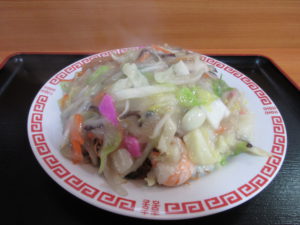 |
 |
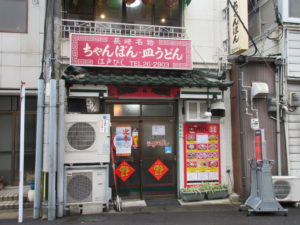 |
It is a dish with stir-fried ingredients such as pork, seafood, and plenty of vegetables,
placed on top of thin noodles fried in oil.
Variety of local cuisines in Aso and Kumamoto
Dago-jiru, Takana-meshi and Basashi
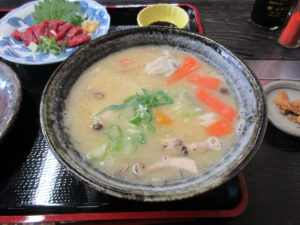 |
Dago-jiru Soup cuisine used dumpling (dago) made by rolling flour, and also a lot of ingredients are included such as vegetables and meat. |
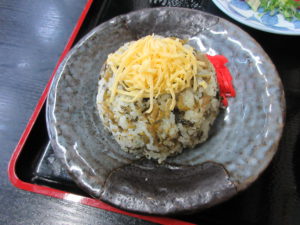 |
Takana-meshi (rice) Made by frying Takana (Cruciferous leafy vegetables) chopped in oil and mixing it thoroughly with freshly cooked rice |
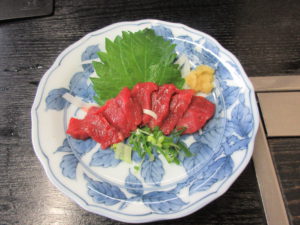 |
Basashi Kumamoto’s local dish of thinly sliced horse meat |
Mizutaki, in Fukuoka
It is a local cuisine in Fukuoka. Mizutaki (boil in water) describes, this is a hot pot dish made
with chopped chickens, negi, and a variety of vegetables put in a pot of water and boiled,
then dipped in ponzu sauce.
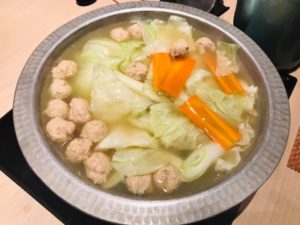 |
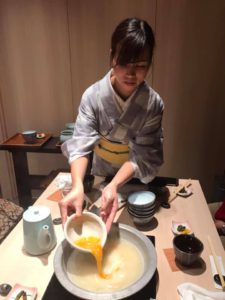 |
